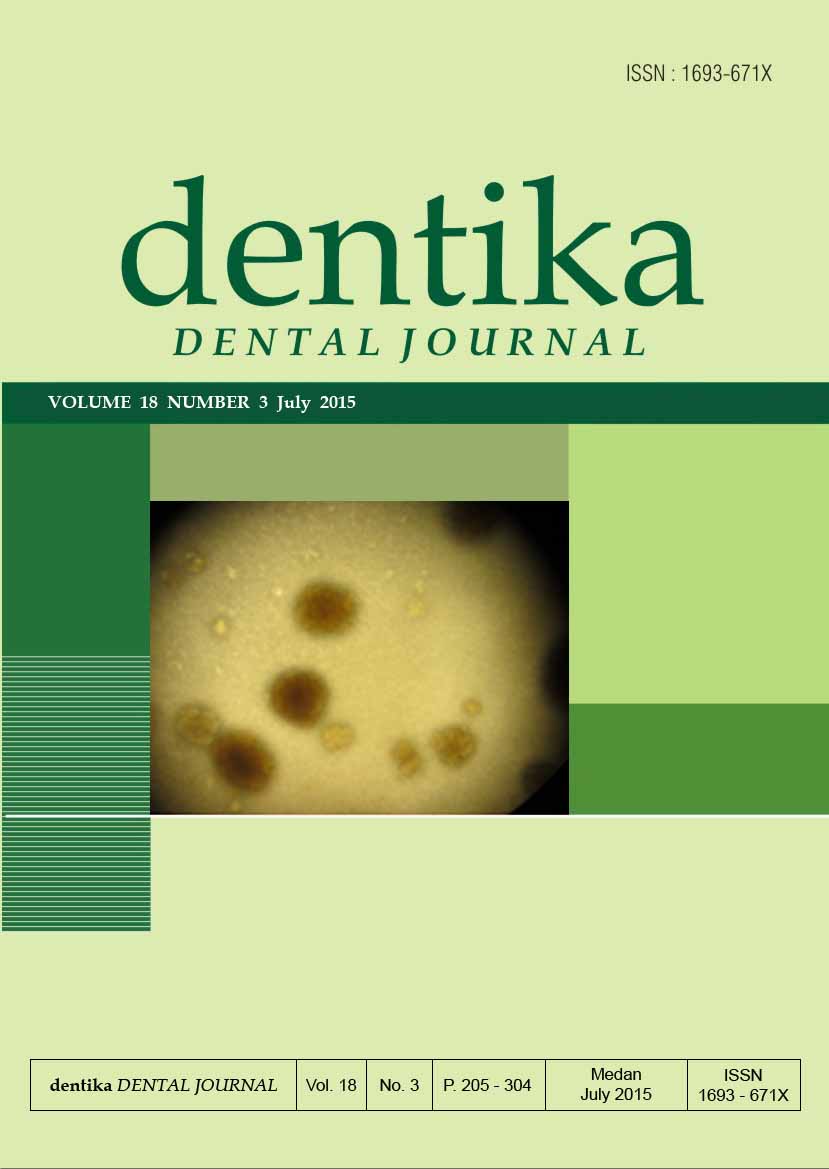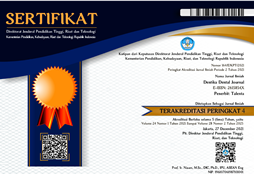MICROLEAKAGE OF SAUCER-SHAPED CLASS II COMPOSITE RESIN RESTORATION
KEBOCORAN MIKRO PADA RESTORASI KLAS II RESIN KOMPOSIT BERBENTUK SAUCER
DOI:
https://doi.org/10.32734/dentika.v18i3.1962Keywords:
saucer-shaped Class II restoration, filling technique, matrix, load, microleakageAbstract
Filling techniques influence in reducing polymerization shrinkage which cause microleakage. Besides, the use of matrices
also contributes to achieve good marginal ridge. This study was aimed to examine the effect of filling techniques and the
use of matrices on microleakage of saucer-shaped Class II restorations. Mandibular premolar specimens were prepared in
saucer-shaped cavity design, then they were divided into eight groups according to filling techniques (bulk or
incremental), the use of matrices (circumferential or sectional), and whether load was provided or not. Specimens were
immersed in saline for 24 hours, then thermocycled, later immersed in 2% methylene blue for 24 hours. Micro gap was
measured by scoring dye penetration in specimens that were sectioned mesio-distally under a stereomicroscope with 20x
magnification. Furthermore, visual analysis was performed under Scanning Electron Microscope to examine the
microleakage in details. Statistical analysis with Kruskal-Wallis test and Mann-Whitney test demonstrated that bulk and
incremental filling techniques were not significantly different in microleakage (p> 0.05). This study also demonstrated
that the use of matrices was significantly different in microleakage in different filling techniques (p< 0.05), whether load
was provided or not. This study showed that the use of matrices was important in reducing the microleakage in saucershaped
Class II restorations.


















